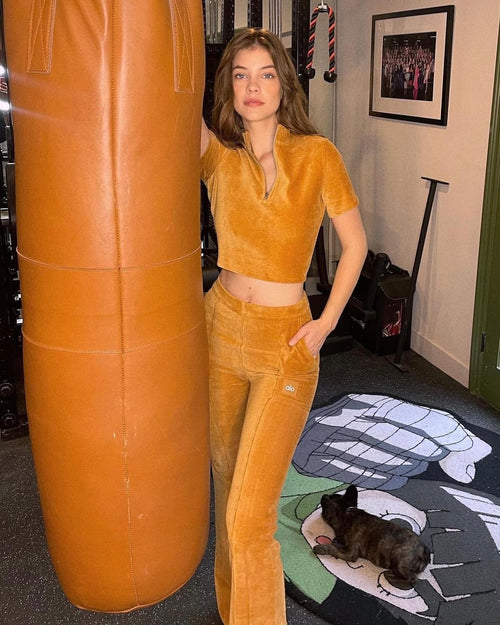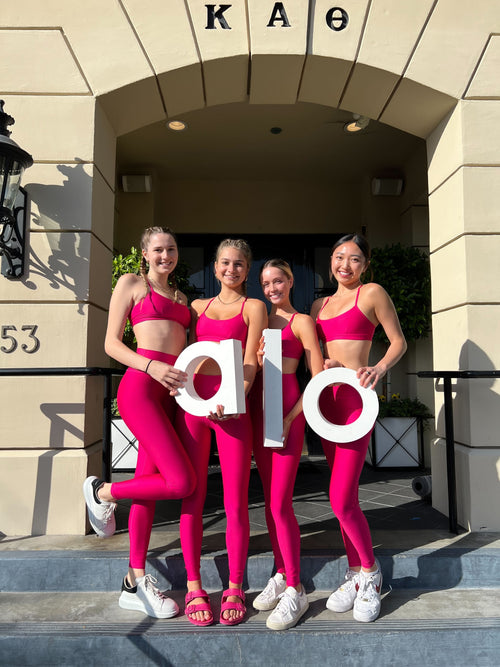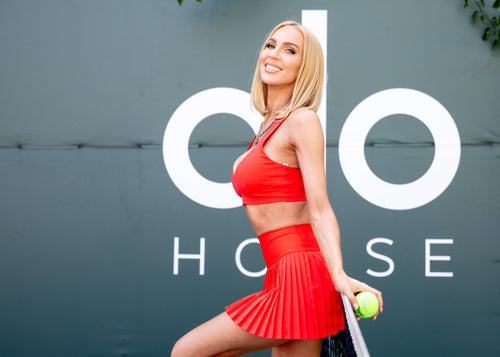Andrea Taylor knows a thing or two about self-healing. She discovered yoga in high school and was hooked from the first savasana, an experience that would set her on a lifelong journey to learn more about herself and her greater purpose. Now the yogi dedicates her days to nurturing her own practice and helping others heal holistically through techniques like deep-tissue massage, meditation, breathwork, sound healing and qigong, an ancient Chinese practice that promotes mind and body health. Andrea gave us the scoop on her work as an intuitive healer and how she used yoga to overcome her fear of speaking up, plus her favorite songs to flow to below.
How did you get into yoga?
I began practicing as a freshman in high school. I was hooked from the first class and knew right away that I wanted to become a teacher one day, although it took me 10 years to pursue that dream. The physical part of the practice was fun and an easy way to get out of my head, but it was the spiritual and meditative parts of the practice that I was most attracted to. At that time I was having trouble fitting in and learning to accept myself, as I was creative, introspective and just different from most of my peers. The yoga studio gave me a place to feel complete. I still am all these things, but I've learned so much more about myself through my practice, and I feel more confident in my uniqueness.
I had a pretty intense out-of-body experience lying in savasana at the end of my first yoga class. I closed my eyes, surrendered my body and physical concerns, and felt like I had dissolved into everything around me. I began to see and feel a sort of portal beaming through my heart center, going deep down into the heart of the earth and shooting far away into the cosmos. Immediately I knew this was the real deal, and there was nothing I would rather do than help people connect the physical and spiritual worlds and live healthier, happier lives.

You’re a self-described "intuitive healer." What does this mean exactly?
I have been a deep tissue massage therapist for nearly 10 years. In this work I use my strength and extreme sensitivity to find and help alleviate people's aches and pains. I gained an in-depth understanding of the human body, the musculoskeletal system, and the myofascial layers of the body through my studies, and I use this knowledge in my yoga teaching and practice as well. I also use a variety of other healing modalities, including yoga, meditation, breathwork, sound healing, energy work, qigong, seasonal adaptation, herbs and essences, astrology, and tarot to help people get more in touch with themselves. I believe it is an ongoing process to unwind past traumas and even just rebalance from the constant stresses of living in the modern world. A big part of being an intuitive healer means that you are dedicated to your own personal healing and spiritual journey, as it is only through healing your own wounds that you can learn to help others.
You’re also an empath, which means you often take on other people’s emotions. How did you learn to work through this, and how does your practice play into that?
Around the age of 15 I met a woman who was a non-traditional psychotherapist, reiki master and Shamanic healer. She helped me understand that I was an "energetic sponge," meaning that I easily absorbed the energies of all of the people and things around me. She taught me about energetic shielding, how to use meditation and visualization to build and strengthen your auric field, and, as a healer, how to ground out and release any negative energies you have taken on from others. I later learned very similar techniques and meditations when I practiced qigong, a Chinese form of personal energy work.

My yoga practice is my place to internally reconnect and recalibrate on a daily basis. It can be hard to actually know how you’re feeling on a day-to-day basis unless you intentionally create space in your day to stop, breathe, connect and reflect on what’s going on within. It is so important, especially if you identify as a highly sensitive person or an empath, to make self-care rituals a top priority in your daily routine. I believe it is important for everyone to develop these regular habits, but if you tend to take on other people’s stuff’, or feel drained and exhausted after giving your energy out to everyone else in your life, I think it is VITAL to take the time and space to fill your own cup, so that you have more to give back.
How has yoga affected your day-to-day life?
Yoga helps me in almost every way I can imagine off the mat; through my practice I learned to bring patience, compassion and understanding into my day-to-day life and my interactions with others. Sitting in traffic or dealing with aggressive people can be stressful, but you can choose to get all worked up and emotional over it—yes, anger is an emotion—or you can practice your breathwork, listen to something relaxing, enjoy the clouds and trees you're driving by, let someone in in traffic, and maybe even be surprised when the kindness is reflected back to you.
What has been the most difficult part of your yoga journey, and how did you overcome it?
The most difficult part of my teaching journey by far was learning how to speak up, believe in myself and hold space in front of a room of people! Although I loved to read from the book in school, when it came to giving a speech or standing up in front of a room full of people, I would get really anxious.
I got over this fear by simply facing it. My first few classes were awkward and scary, and I was stumbling over my words. For me it was like learning to ride a bike; the more I did it, the more comfortable it became, and something that had once been one of my greatest fears—openly speaking my authentic truth and sharing my heart and soul with others—became easier the more I did it.

Go-to yoga pose and why?
I love almost any forward fold, but I’m going to say Baddha Konasana or bound angle pose. If I only have a few minutes to practice, I nearly always practice this pose. It is such a nice stretch for the entire back body, the hips and inner thighs, and it opens the myofascial layers all the way from the knees up through the crown of the head.
Any exciting projects that you're working on?
I am finalizing my first e-book, which will be the full collection of all my favorite core movements! I think we all need to have a strong core, so we can move more intelligently and efficiently through our daily life, but having a strong core can also help prevent injury, especially as we get older.
I'm also working on a fitness-oriented series that I am super excited to launch with Alo Moves, which will be up around February 2019. And the New Year is the perfect time to get back into the groove with your workout practice!



